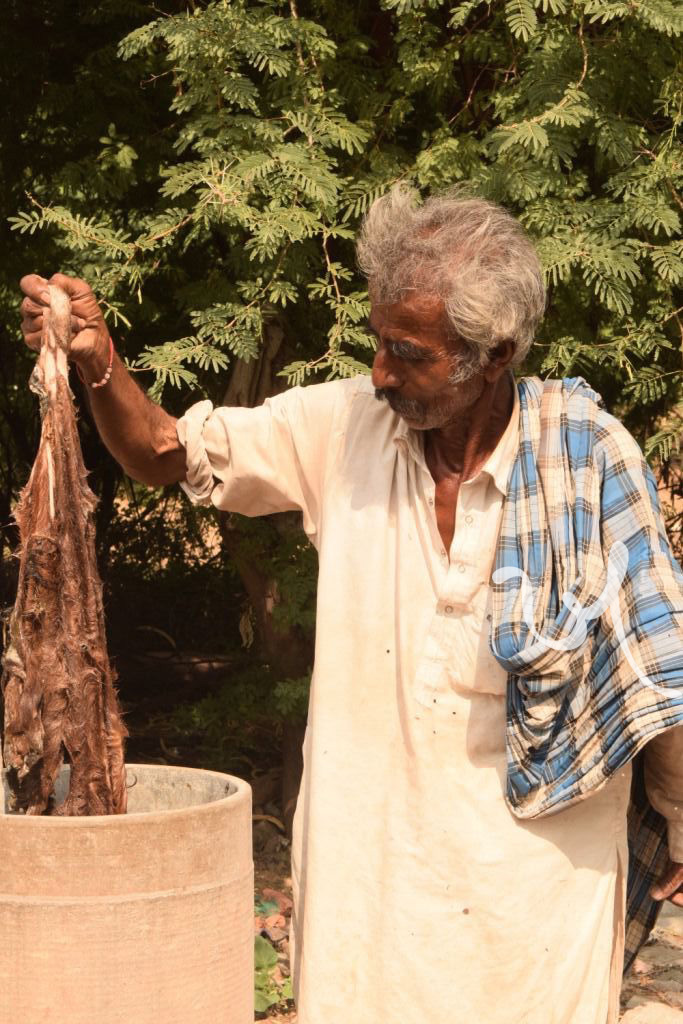The Maldhari's waste, the Meghwar's gold
The Meghwars played an important role in treating dead cattle and possessed impressive skills in skinning, treating and tanning hides. Preserved into leather, these hides then became the raw material for beautiful objects and footwear essential to various communities. Meghwars never slaughtered an animal for its hide, and worked only with animals who had died of natural causes. Through this process, Meghwars came to a keen understanding of animal biology and often advised the Maldharis on the health or illnesses of their animals. Skinning and processing the hide of a dead animal was laborious and considered repugnant work by other communities. Paradoxically, the Meghwars were shunned even as everyone wore the shoes they made. Their insight and skill remained largely unappreciated.
Tanning Process
Once they had procured skins, the Meghwars used natural elements available in their surroundings to cure them. It took forty days to tan one skin.
STEP 1
If a Maldhari herder’s animal died, they notified their appointed hataar Meghwar. The Meghwar arrived at the spot, sometimes alone, sometimes in a group (depending on the size of the animal,) removed the skin, and brought it home
STEP 2
Salt procured from the Rann was pounded by the women into a fine powder with a wooden bhatodo and rubbed on the skin to preserve it
STEP 3
The skin was soaked for a month in a concoction of water, salt, and sap from the Aakdo (Crown Flower) tree made by the women. The artisan had to be careful about the ratio of these ingredients -- if anything went amiss, the mixture would curdle and the skin would be spoilt. The artisan checked the mixture every ten days. At the end of the month, all the hairs from the skin were removed
STEP 4
The skin was then stitched to create an open-mouth sack, which was filled with small pieces of the Baaval tree (Babul Acacia). The sack was hung on a line between two wooden poles with a cement kothi placed in a pit under it. For the following days, the artisan poured water through the sack until the water stopped draining out of the pores in the skin. The chips of baaval released tannin, a natural chemical that closed the pores of the skin and gave it a reddish color. This was the step that transforms the skin into leather
STEP 5
The leather was then washed with water and left in the shade to dry. Once dry, it was beaten with a bhatodo to soften it for further crafting






